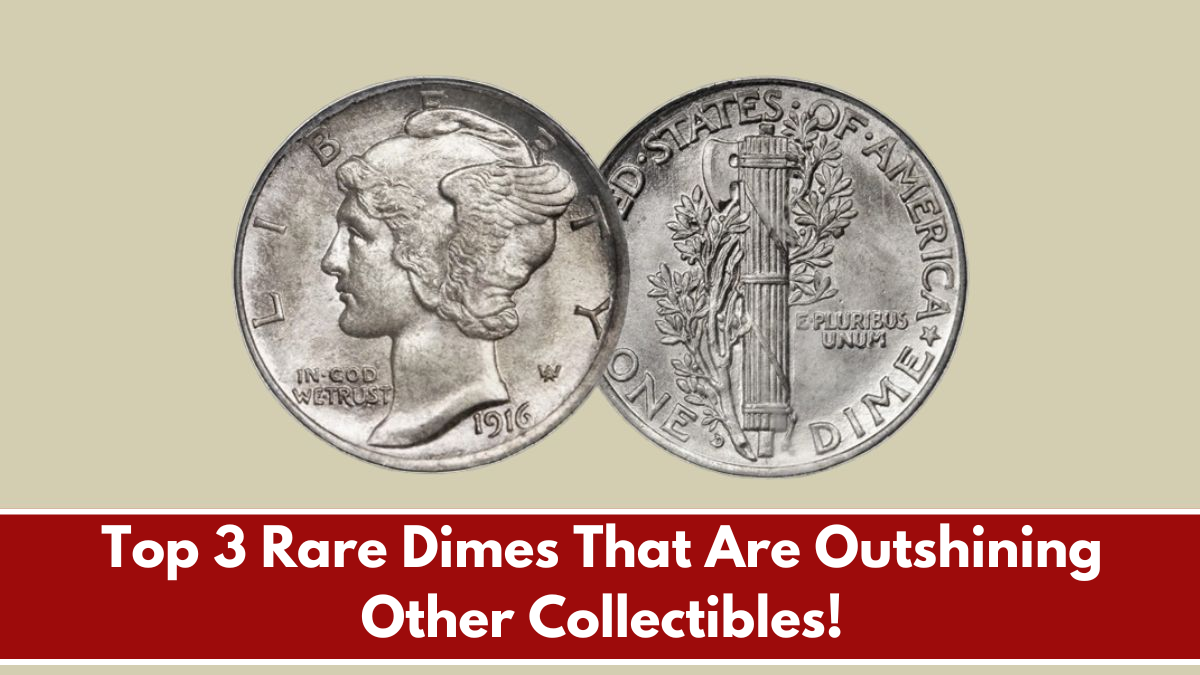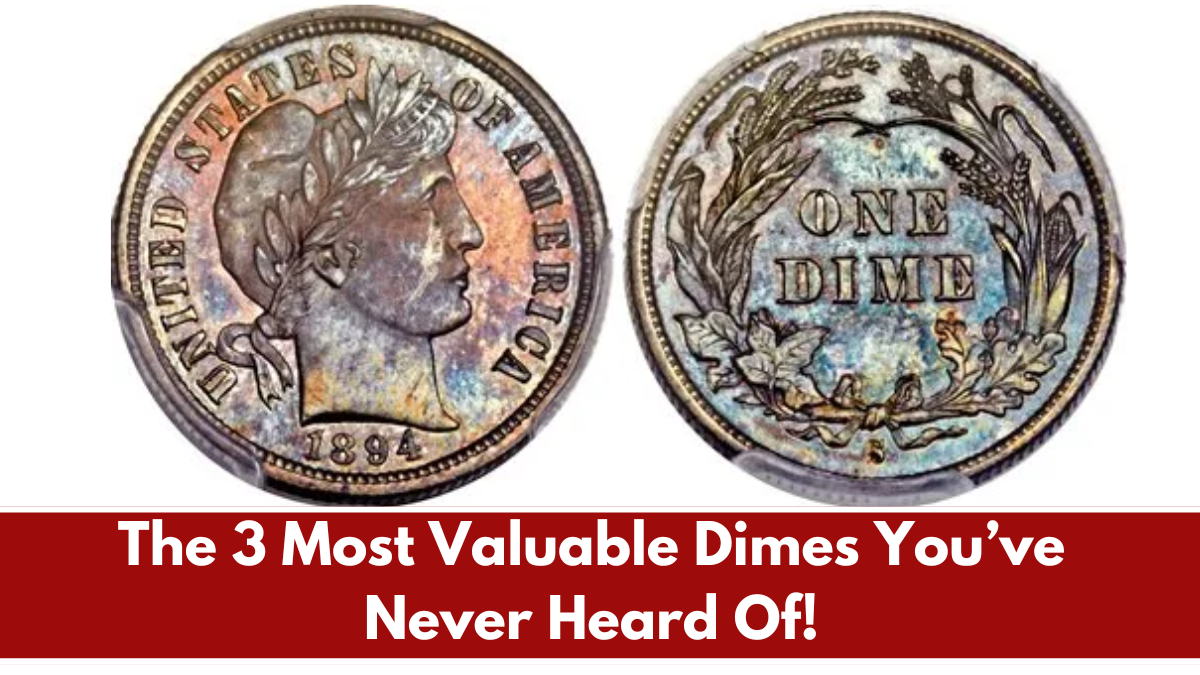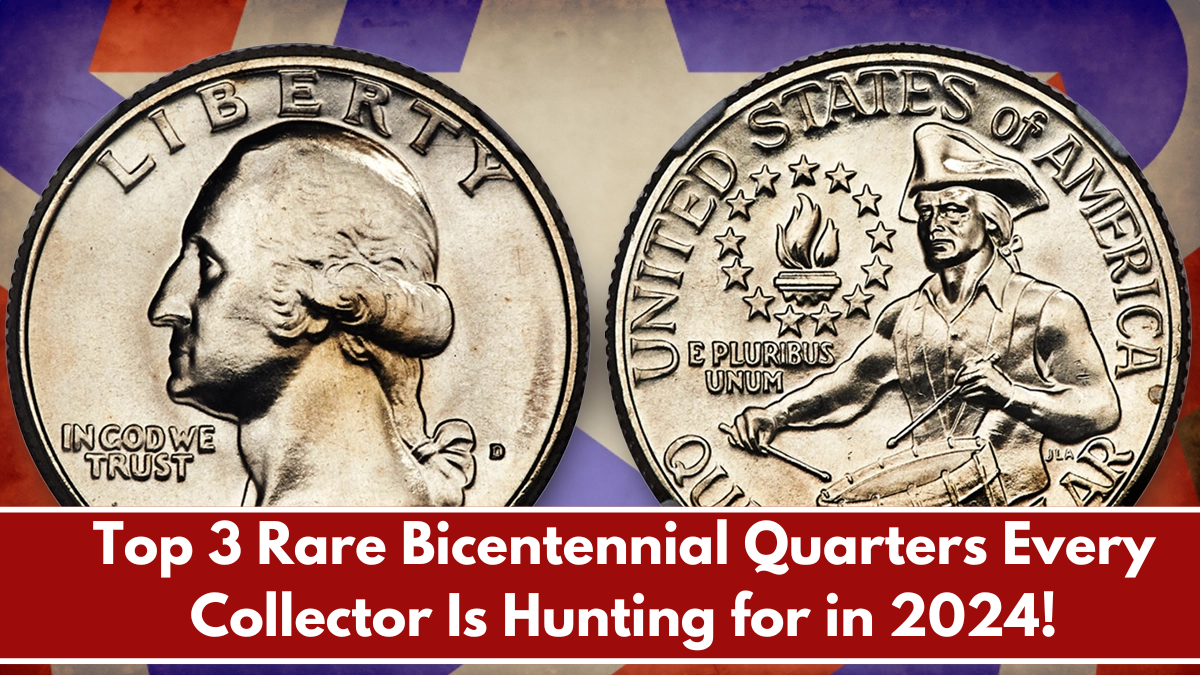In the world of coin collecting, certain dimes have gained legendary status due to their rarity, historical significance, and rising value. These rare dimes are increasingly becoming standout investments, often outshining other collectibles as they become more sought after by collectors and investors alike. Whether it’s due to limited mintages, unique error features, or their connection to important events in history, these rare dimes are proving that they are more than just a hobbyist’s dream—they’re becoming major players in the world of collectible investments. Here are the top 3 rare dimes that are outshining other collectibles right now.
1. 1894-S Barber Dime
The 1894-S Barber dime is the Holy Grail for serious numismatists. With only 24 coins ever minted, this dime is one of the rarest and most valuable in U.S. coin history. For years, the 1894-S has been coveted by collectors, with prices ranging from $1 million to $2 million, depending on the coin’s condition. Its historical backstory, coupled with its extreme rarity, has solidified its place as one of the most iconic and sought-after dimes of all time. In recent years, its value has steadily risen, proving that the 1894-S Barber dime is not just a collectible—it’s an investment goldmine.
2. 1916-D Mercury Dime
The 1916-D Mercury dime is one of the most famous and highly coveted coins in the Mercury dime series. With only 264,000 of these dimes produced, it’s the rarest coin in the series, making it a must-have for serious collectors. This dime has seen a significant rise in value over the years, with well-preserved examples now fetching between $1,000 and $10,000, depending on the coin’s condition. The 1916-D Mercury dime’s beautiful design and scarcity continue to drive its desirability, and it’s rapidly becoming one of the most valuable dimes in circulation today.
3. 1942/1 Mercury Dime (Overdate Error)
The 1942/1 Mercury dime, known for its overdate error, is another rare dime that’s gaining incredible traction in the collecting world. The overdate occurred when the mint mistakenly used a 1941 die for striking coins, resulting in a coin with a “1” over a “2” in the year 1942. This error is highly sought after by collectors due to its unique features, making it a valuable addition to any collection. Depending on its condition, the 1942/1 Mercury dime can be worth anywhere from $1,000 to $10,000, with some pristine examples even commanding higher prices. As collectors seek out error coins with distinct features, the 1942/1 Mercury dime continues to rise in value and popularity.
These three rare dimes— the 1894-S Barber dime, the 1916-D Mercury dime, and the 1942/1 Mercury dime—are outshining other collectibles and have proven to be excellent investments. Their rarity, historical significance, and increasing demand among collectors and investors have made them some of the most valuable coins in the numismatic world. Whether you are a seasoned collector or just beginning, these iconic dimes should be on your radar as they continue to rise in value and stand the test of time.
FAQ’s:
1. What makes a dime rare?
A dime becomes rare due to factors such as limited mintage, minting errors, key dates, and high demand from collectors. The coin’s condition also plays a significant role in its rarity.
2. How do I identify a rare dime?
Look for coins with unique characteristics, such as low mintage years, minting errors, or coins from key dates in coin series. Professional coin grading can help identify a coin’s rarity.
3. Why is the 1894-S Barber dime so valuable?
Only 24 1894-S Barber dimes were ever minted, making them extremely rare. Their historical significance and scarcity contribute to their immense value.
4. What is the difference between the 1916 and 1916-D Mercury dimes?
The 1916-D Mercury dime is much rarer than the 1916, with only 264,000 coins minted. Its limited supply makes it one of the most valuable Mercury dimes.
5. How can I sell rare dimes?
Rare dimes can be sold through reputable coin dealers, online auction platforms, or at coin shows. It’s important to have the coin appraised to understand its value before selling.













